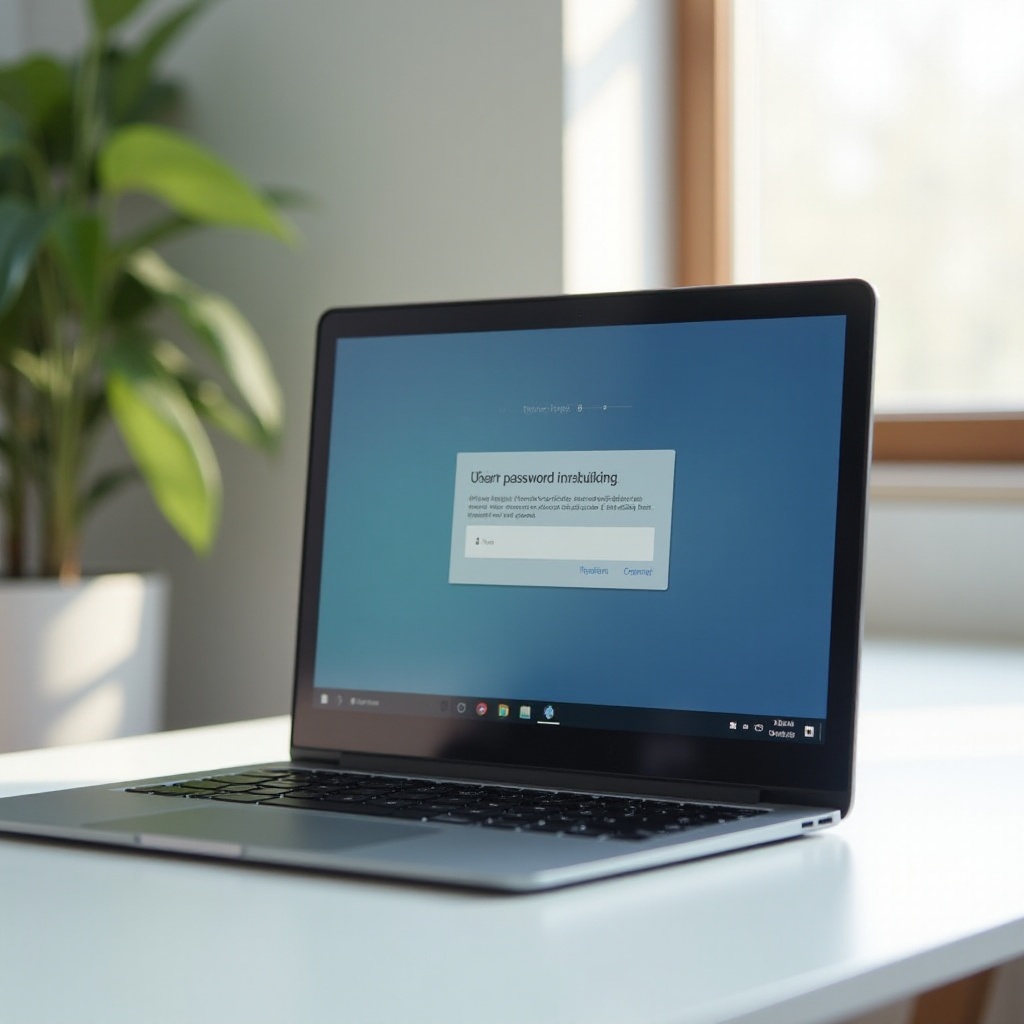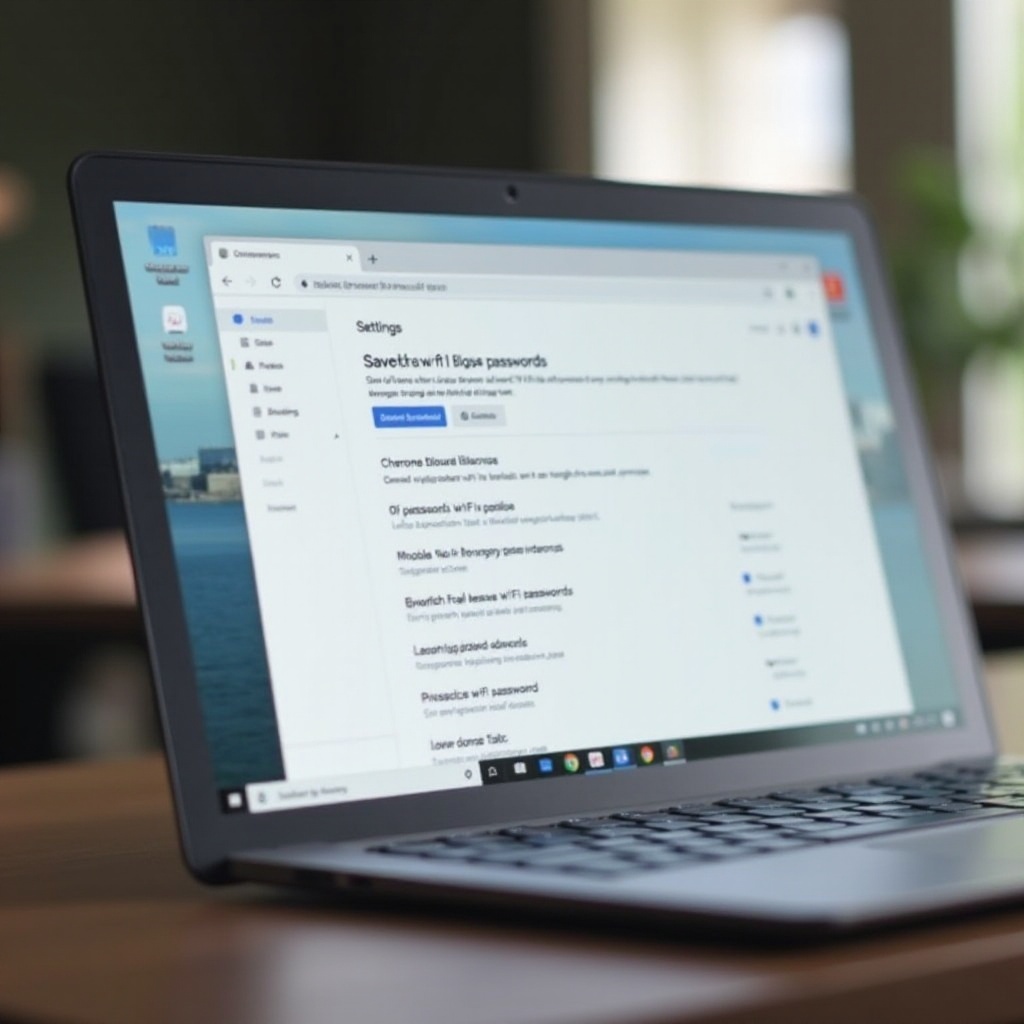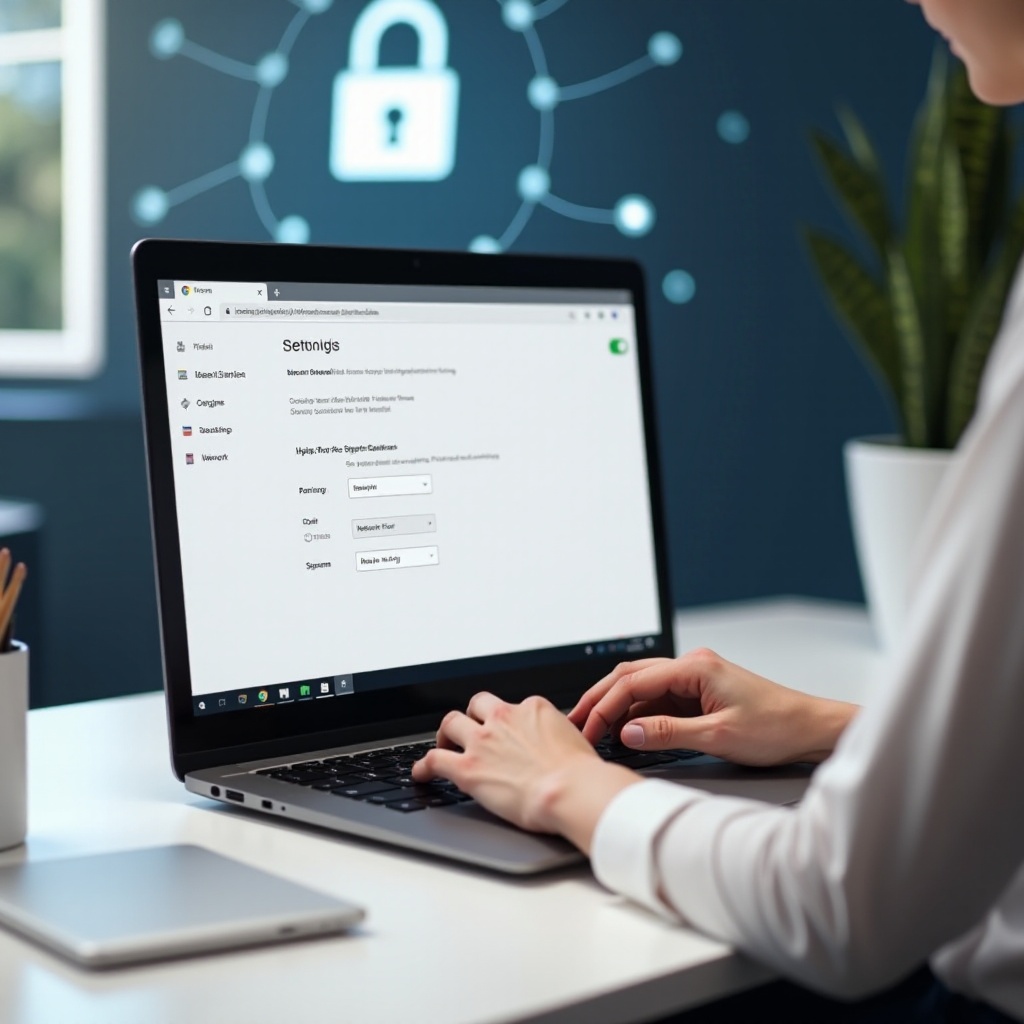Introduction
Discovering how to see the internet password on Chromebook can save you from countless frustrations, whether you’re setting up a new device or sharing access with friends. While Chromebooks prioritize security, various methods allow you to retrieve your saved Wi-Fi passwords conveniently. This guide covers everything from basic settings to leveraging Linux or Developer Mode, and even using third-party tools for an efficient solution.

Why You May Need to View Your Wi-Fi Passwords
There are numerous reasons why someone might need to view their Wi-Fi passwords on a Chromebook. Perhaps you’ve forgotten the password but need to connect another device. Maybe you’re trying to assist a friend or visitor in joining your network, or you’re in a situation where managing network configurations is necessary. Understanding these needs is crucial as it ensures seamless connectivity and assists in managing network security.
Checking Saved Wi-Fi Passwords through Chrome Settings
The most straightforward way to see your internet password on a Chromebook is through the Chrome settings. This method is user-friendly and does not require any advanced knowledge.
- Open Chrome Browser: Launch your Chrome browser.
- Access Settings: Click on the three dots at the top-right corner to open the menu and select ‘Settings.
- Navigate to Network Settings: Scroll down and select ‘Network’ from the panel on the left.
- View Saved Networks: Click on ‘Wi-Fi’ and then ‘Known networks.
- Reveal Passwords: Select the network you are interested in and click on ‘Show password.
This method relies on having administrative access to the device, ensuring only authorized users can view sensitive network information.

Using Linux on Chromebook to Retrieve Wi-Fi Passwords
If the Chrome settings don’t provide the needed information, using Linux on a Chromebook is another viable alternative. With the integrated Linux (Beta) feature, accessing more advanced system functions becomes easier.
- Enable Linux (Beta): Go to ‘Settings,’ find ‘Linux (Beta),’ and turn it on.
- Install Necessary Packages: Open the Linux terminal and install necessary tools by using commands like
sudo apt-get install. - Access Network Configurations: Utilize commands such as
cat /etc/NetworkManager/system-connections/*to list Wi-Fi profiles. - Find Your Password: Look for
psk=followed by your network’s password within the configuration.
This method involves using command-line tools, offering a higher level of control and flexibility in managing network configurations.
Using Developer Mode to Access System Files
Enabling Developer Mode on a Chromebook can provide deeper access to the system files, thereby making it possible to retrieve saved Wi-Fi passwords. However, it’s crucial to understand that this method comes with risks, including voiding the warranty and potentially making your device less secure.
- Backup Your Data: Before proceeding, ensure all important data is backed up.
- Enable Developer Mode: Press and hold
Esc+Refreshkeys, then press thePowerbutton to reboot. Follow the instructions on-screen to enable Developer Mode. - Access System Files: Once in Developer Mode, press
Ctrl+Alt+Tto open Crosh (Chrome Shell). - Find Network Configurations: Enter the
shelland navigate to/etc/NetworkManager/system-connections/. - Retrieve Password: Use text editors like
nanoto view files and findpsk=entries.
This approach provides detailed control but must be handled with caution due to the advanced nature of these operations.
Third-Party Tools for Viewing Wi-Fi Passwords
Several third-party tools can help you view saved Wi-Fi passwords on your Chromebook easily. These tools, although convenient, should be used carefully to maintain the security of your device.
Researching and choosing the right tool is crucial, as not all third-party applications are secure or reliable.
- Tool Selection: Choose reputable tools that are well-reviewed and trusted.
- Installation: Follow the installation guide provided by the tool.
- Usage: Most tools come with user-friendly interfaces that allow you to retrieve passwords with minimal effort.
By understanding these methods, you can ensure that you choose the option that best matches your skills and security needs.
How to Maintain Network Security and Privacy
Maintaining the security and privacy of your network is paramount when managing Wi-Fi passwords. Here are a few tips:
- Use Strong Passwords: Ensure your Wi-Fi passwords are complex and not easily guessable.
- Regularly Update Passwords: Periodically change Wi-Fi passwords to enhance security.
- Monitor Connected Devices: Regularly check the list of devices connected to your network.
- Limit Access: Only share your Wi-Fi password with trusted individuals.
By following these tips, you can safeguard your network while retaining the convenience of accessing your Wi-Fi passwords when necessary.

Conclusion
Knowing how to see the internet password on your Chromebook can be incredibly useful. Whether you utilize Chrome settings, Linux, Developer Mode, or third-party tools, each method serves a different need and offers varying levels of accessibility and security. Properly managing and securing your network is vital to maintaining a safe online environment.
Frequently Asked Questions
What if I can’t see my Wi-Fi password on my Chromebook?
If you can’t see your Wi-Fi password via Chrome settings, consider using Linux or Developer Mode, or employ a trusted third-party tool depending on your comfort level with these methods.
Is it safe to use third-party tools to view passwords?
Using third-party tools can be safe if you choose reputable and well-reviewed applications. Always download from trusted sources to avoid security risks.
Can I view passwords without enabling Developer Mode or Linux?
Yes, the simplest method is through Chrome settings. If this doesn’t work, third-party tools provide a user-friendly alternative without needing Developer Mode or Linux.